Chinese Name: 阳关 Pronunciation in Chinese: Yángguān
Service Hours: 08:00-20:00
Recommended Visiting Time: 2-3 Hours
Occupied Area: About 100,000 square meters
Building Time: About 107 BC
Address: Yangguan Town, Dunhuang City, Gansu Province, China
Building Function: Yangguan Pass was built to defend the dynasty against foreign aggression
| Ticket | Price |
| Standard Ticket | 50 yuan |
| Preferential Ticket (Senior citizens of 60 to 70 years old, excluding 70 years old and the underage above 1.2 meters) |
25 yuan |
1. Children under 1.2 meters are free of charge;
2. Senior citizens over 70 years old (with ID card) are free of charge;
3. People with disabilities (with disability certificate) are free of charge.
| Contents | Price |
| Tour Bus | 10 yuan |
| Camel Riding | 60 yuan |
| Horse Riding | 50 yuan |
| Donkey Cart | 20 yuan |
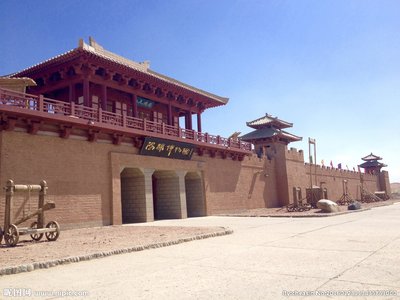
Yangguan Museum is located in Yangguan Town, 70 kilometers southeast of Dunhuang city, Gansu Province. Thanks to abundant historical and cultural relics in this area, it is valuable in aspects of the exhibition, education, cultural preservation, tourism, and research.
The buildings here are in the style of those of the Han Dynasty (202 BC – 220 AD), being grand and imposing. Buildings in the museum are across from Yangguan Beacon Tower. The layout makes the natural landscape and human landscape blend into each other in perfect harmony. For years, Yangguan Museum is committed to, in forms of sculpture, mural, architecture, exhibition, and environment, present the history and culture of the Silk Road, the Great Wall of the Han Dynasty in Yangguan and Yumenguan, and Northwest China to make tourists better understand the Silk Road culture, Dunhuang culture, especially the military culture of the two-pass (Yangguan and Yumenguan Pass), the Great Wall and the frontier ethnic culture Cognition.
Nearly 4,000 cultural relics are housed in this museum, making it valuable both academically and historically.
Yangguan Pass was built in the Han Dynasty during the reign of Emperor Wudi (156 BC – 87 BC) and was located in the south of Yumenguan Pass. The original fort has already disappeared, leaving only about ten thousand square meters of ruins of foundations and walls.
Emperor Wudi ordered to build Yangguan Pass after defeating Xiongnu, an ancient nationality in China, in Hexi Corridor, a long and narrow flat land that stretches from northwest to southeast in Gansu Province. Hexi Corridor has been inhabited by ethnic minority groups including Yuezhi and Wusun from the Spring and Autumn Period. Xiongnu had grown militarily strength during the Han Dynasty and almost occupied the Hexi area. The disturbance, invasion, and robbing of this nationality brought great security risks to the Han Dynasty. However, the dynasty has never thrown out Xiongnu until the Wudi was crowned emperor.
By great efforts, Wudi successfully defeated Xiongnu and recaptured the Hexi Corridor. He set up Yangguan in Dunhuang city to better govern the area and defense against further external invasion. And at that time, Yangguan was the hub where the ancient dynasty communicated with the outside world.
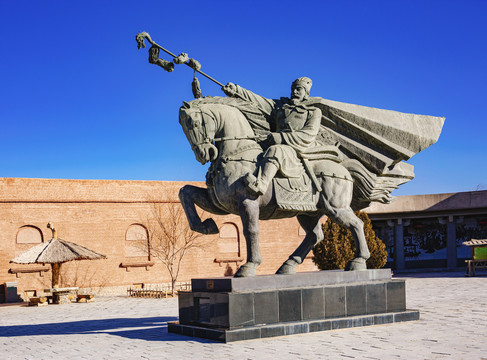
Zhang Qian, a native of Chenggu, Shaanxi Province, went to the west region twice and opened up the Silk Road, the first road in Chinese history for the economic and cultural exchanges between China and the outside world. Due to his great contributions, Zhang Qian was conferred on the title of “Bowanghou” (Bowang Marquis) by Emperor Wudi of the Han Dynasty. The statue is made of bronze, which is 5.46 meters high and weighs about 5 tons. This is the most popular site for tourists to take photos.
The current building of Yangguan Pass fortress was rebuilt based on the description about it in Dunhuang Posthumous Papers (a batch of books found in Mogao Grottos at Dunhuang). “Yangguan Fortress” has become such a symbol in Chinese culture that arose people’s sadness of staying separately from their families because of its unique position and function, and “Yangguan Avenue”, however, carries a meaning of a bright future. Tourists can better understand the function as a custom of Yangguan Pass by holding an official document for checking and going through here after the check. Visitors can also imitate the common behavior of binding farewells by drinking to each other between close friends at ancient times.
These two halls are both main exhibition halls in the museum.
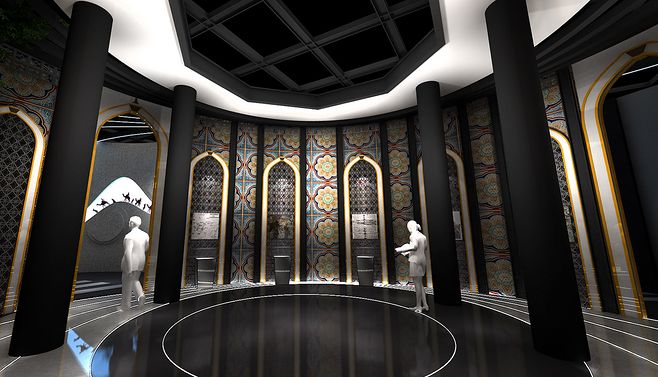
Silk Road Exhibition Hall comprises four parts. Exhibits in this hall reflect the background and development process of the Silk Road as well as its contribution to social progress and historic position, and systematically and comprehensively presents the history and culture of Silk Road.
The Exhibition Hall of the Han Dynasty Great Wall shows the history and culture of Yangguan Pass, Yumenguan Pass and the Great Wall in the Han Dynasty. The hall introduces the setting and establishment of the two passes, and the Great Wall in the Han Dynasty, their important role in economic and social development, and the ruins of the two passes.
Duwei is an official position in Han Dynasty, which is responsible for collecting customs duties on incoming and outgoing goods and for inspecting business and travel teams in Yangguan. Inside the mansion are the circumstances where Duwei handles his work and prepares the Customs clearance document, the best souvenir in the scenic area of Yangguan.
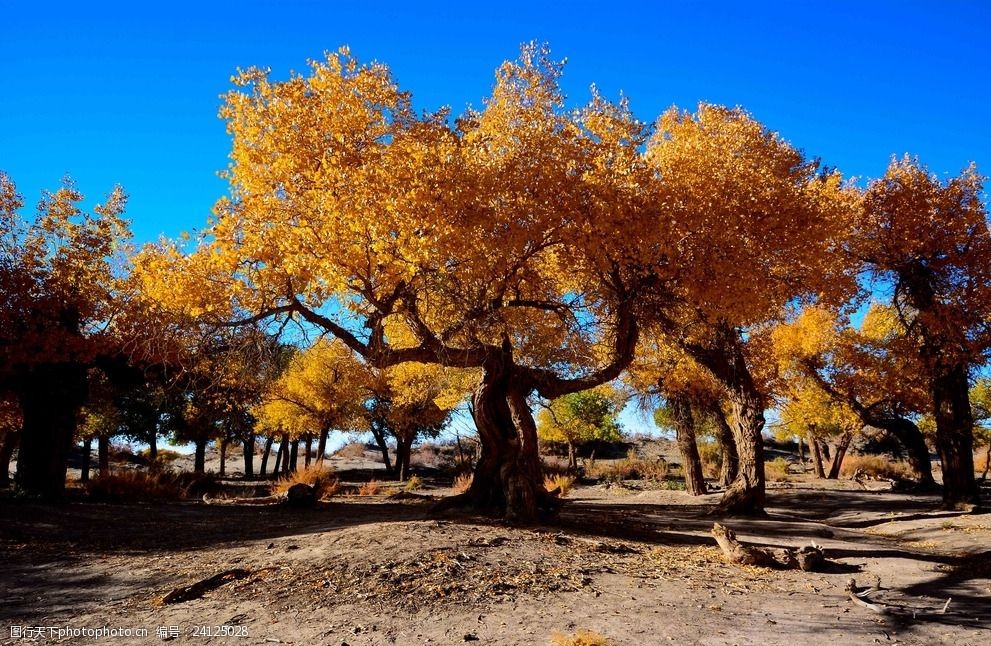
Populus Diversifolia
Being different from common aspen, Populus diversifolia can adapt to the dry and changeable climate in deserts and thrives in Taklimakan Desert with the high salt content in groundwater. Therefore, Populus diversifolia is praised as “the backbone in deserts” and there is a saying that the tree can stay alive for one thousand years, and does not fall in one thousand years after death, and does not rot in one thousand years after falling.
As the gateway to the West Region and an important pass on the south route of the Silk Road, Yangguan Pass has been a strategic position. After the Song and Yuan Dynasties, accompanying the decline of the Silk Road, Yangguan Pass has been abandoned. Today, the Yangguan fortress does not exist anymore, and the remaining Yangguan beacon tower, which is called the eyes and ears of Yangguan Pass, stands on Dundun Hill.
Beacon is a system as well as the equipment for military guards and communication in ancient China. Beacons were set up in border areas, strategic passes, and by roads. Once enemies appear, the beacons are lit to pass on the message.
After the Han Dynasty recovered the Hexi area, the place became well-developed. At that time, Yangguan was sparsely populated and the pasture there was lush. Wild horses flocked by Wowa Lake.

It was said that one day in 113 BC, Emperor Wudi felt so bored that he divined using the Book of Changes and the results showed that magic horses would come from the west. To his surprise, soon after his divination, the news came from Dunhuang that some magic horses had been found by Wowa Lake.
The horses were found by a criminal who had been sent to a farm near Wowa Lake. He occasionally found that there was a group of wild horses drinking by the lake and one of them was red and looked stronger than any others. Knowing that his Emperor liked fine houses very much, the criminal wanted to capture this beautiful horse and presented it to Wudi.
After carefully observing the daily routine of these wild horses, he came out with a good idea. The man prepared a dummy and put it by the lake so that the horses did not dare to drink there anymore. As the dummy always stayed still, the horses came back again. It was the right time for the man to take away the dummy and stand in the exact place it was put with a rein in his hand, waiting for the horses to come again. Finally, he successfully captured the red horse and presented it to the emperor.
Seeing that the horse was so unique and beautiful, the emperor was convinced that it was the award from Heaven. From that time on, Wowa Lake was called “home to magic horses”.
The Legend of the Kulongshan Mountain
The Kulongshan Mountain means the mountain of holes.
To the north of Yangguan Pass lies a hill that is in the shape of a Chinese dragon, and therefore the hill was named Dragon Head Mountain. There is a large gap in the middle of the mountain and there are two big holes on both sides of the gap, so it was also named the mountain of holes.
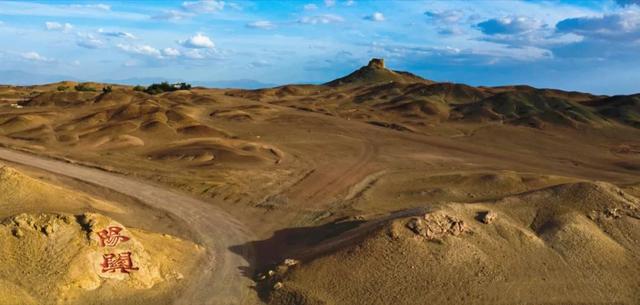
A legend says that there was no gap in the mountain a long time ago, it was a complete mountain instead and in front of the mountain was the open land with a beautiful lake. After many years, people found a curious phenomenon in the lake. The lake was always sparkling with white gas because two dragonfish in the lake became sprits and the white gas was from their breath. Although the two dragonfish had magic power, they never hurt people.
Several years later, general Tang Weibao came to defend Yangguan Pass. Tang was an experienced swimmer and he often swam in the lake. After close observation, he found that there was no such thing as dragonfish sprites and the sparkles were from two stones when the sunlight reaches them in the morning and afternoon.
But after knowing this, Tang did not tell the truth to the local people. Considering the stones were precious and would bring him promotion and wealth, he began to find a way to get these stones out and the only method he came up with was to dig two holes on the two sides of the mountain and let the lake water flow away.
But the lake was extremely important to local people and he knew that this proposal would never be supported by people living in Yangguan Pass. Tang Weibao bribed some witches and let them fabricate the lie that there were devils in the lake and the only way to kill them was to dry out the lake. People believed the lie and agreed to dig holes on the mountain, and the process lasted for eighty-one days. With a mighty bang, a big gap appeared in the mountain, and a flood surge then poured down. Several days later, the lake water receded. However, the white stones were never found and only two big holes were left.
Exhibition Hall of the Han Dynasty Great Wall -> Exhibition Hall of the Silk Road -> Yangguan Duwei Mansion -> the Reconstruction of Ancient Yangguan Pass -> the Statute of Poet Wang Wei -> Yangguan Beacon Tower
1. The weather in the scenic area is dry and with strong ultraviolet rays, so please make enough preparations for protection from the sunshine and sunstroke in advance.
2. Please do not litter.
3. Please do not take your pets into the scenic spot.
Take the Urban and Rural Bus in Dunhuang city and get off at Yangguan town.
(Note: You can take the bus at either 10:30 or 13:00)
No subway is available.
Chinese: 请带我去阳关。English: Please take me to Yangguan Pass.
If you go to Yangguan Pass by taxi, it takes about 1.1 hours (about 200 yuan) from Grand Soluxe Hotel Dunhuang.
If you go to Yangguan Pass by taxi, it takes about 1.3 hours (about 245 yuan) from Dunhuang Mogao International Airport.
If you go to Yangguan Pass by taxi, it takes about 1.3 hours (about 235) from Dunhuang Railway Station.
